#support migrant workers
Text
Boycott Qatar World Cup 2022
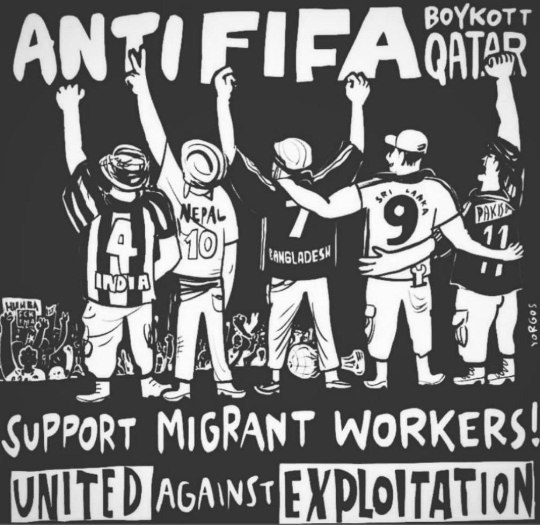
7 notes
·
View notes
Text
whataboutism is so fucking annoying lol. you can and should call out the western nations for hypocricy without actively excusing human rights violations. neither the white saviourism bullshit from the west and the overlooking of human rights violations in Qatar are helping disenfranchised people. like that. that is the whole point of nuance. i’m not sure how engaging in whataboutism is actually meant to be helping
#tp#anyways. help migrant workers and lgbt people do something instead of islamophobic bullshit or whataboutism#and yes the same held true in russia and the same will hold true for usa/canada#like at the end of the day the people impacted by this are people that need our support. nation states are nation states.#there's migrant communities human rights lawyers and qataris all speaking up too and you can and should engage with them
10 notes
·
View notes
Text
.
#I will not be supporting Louis supporting this world Cup#I will not stand by and watch migrant workers due#I will not stand by and allow lgbtq rights to be violated#It's not just football#It's being oblivious to the suffering of thousands#Not just in Qatar#But around the world
1 note
·
View note
Text
yahoo
#these people are 2 face and are reacting differently in front of camera but will still support trump.#they’re not ignorant about trump’s position. they know exactly what trump thinks about immigrants legals or illegals.#and guess what about those migrant workers? many of the migrant workers like trump#taiwantalk#migrant worker#trump#Iowa#farmers
0 notes
Text
Random take no one ask for: being vegan is by no means more ethical than sustainable farming/hunting but a lot of the time it can be a good median of sustainability and more affordable for low income households like mine.
Being vegan for me is foraging wild garlic and mustang grapes and dandelions which I can all find right outside the suburbs in wooded road medians. It's buying rice and beans and various home grown veggies and eating well while not sacrificing extra $ for protein and iron.
I feel like a lot of the time veganism removes humanity from the food chain when taken to extremes but really it's the best thing I can do for my family when the price of un-tortured chicken eggs are that high.
#I have this essay bonking around in my brain maybe one day I'll straighten it out and back it up with research#that being said I still eat honey and support local farmers and beekeepers#$40 a pound local beef isn't in my budget but $10 a pound for pecans is#Also leather shouldn't be wasted all parts of the animal should be used if its life is taken for humans#I mean if you hunt a deer you process all the meat and give the bones antlers and fat to your dogs if you are unable to use them yourself#not to mention skins hold up incredibly well for a lifetime#it should be the same for other animals#also dont even get me started on migrant workers conditions/ wage withholdings in massive corporate slaughter houses#or how corporate farms impose a modern form of indentured servitude on smaller farmers#Much love to those who can afford sustainable omnivore living#Will probably expand on this as I think about it more#veganism
0 notes
Text
this entire fifa thing is ten different kinds of stupid and concerning. but also ofc what did i expect you ppl can’t even boycott chick fil a or mcdonalds or eurovision etc etc as the saying goes
#whoever said that thing about boycotting chick fil a is truly. like. their mind cuz these are such golden words I always come back to them#like i get the love of sport and community that brings and supporting players etc etc and the fact that it’s being marketed and pushed hard#but even with every excuse in mind the fifa stuff does not warrant this kind of support my god#the teams are all packed with bigotry..(thousands of) migrant workers died.. suppressed protests..all for an expensive nationalist project#rymacore
0 notes
Text


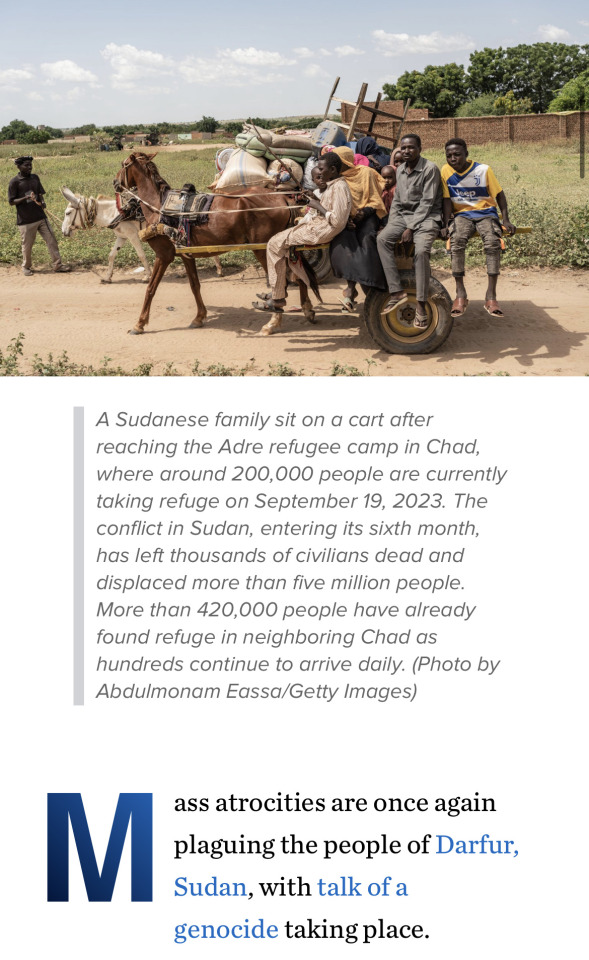
CNN:
Hundreds of families gathered in the West Darfur capital of El Geneina on June 15, plotting their escape from what had become a hellscape of blown-out buildings scrawled with racist graffiti and streets strewn with corpses. The state governor had just been executed and mutilated by Arab militia groups, leaving civilians with no choice but to flee.
What followed was a gruesome massacre, eyewitnesses said, believed to be one of the most violent incidents in the genocide-scarred Sudanese region’s history. The powerful paramilitary Rapid Support Forces and its allied militias hunted down non-Arab people in various parts of the city and surrounding desert region, leaving hundreds dead as they ran for their lives…
…residents set off en masse from southern El Geneina, many trying to reach the nearby Sudanese military headquarters where they thought they might find safety. But they said they were quickly thwarted by RSF attacks. Some were summarily executed in the streets, survivors said. Others died in a mass drowning incident, shot at as they attempted to cross a river. Many of those who managed to make it out were ambushed near the border with Chad, forced to sit in the sand before being told to run to safety as they were sprayed with bullets.
“More than 1,000 people were killed on June 15. I was collecting bodies on that day. I collected a huge number,” one local humanitarian worker, who asked not to be named for security reasons, told CNN. He said the dead were buried in five different mass graves in and around the city.
Conflict erupted between the RSF and the Sudanese army in April. Since then, more than one million people have fled to neighboring countries, according to estimates from the International Organization for Migration.
Now, a telecommunications blackout and the flight of international aid groups have all but cut off Darfur from the outside world. But news of the June 15 massacre began trickling out of the region from refugees who escaped to Chad. The evidence uncovered by CNN suggests that, behind a curtain of secrecy, the RSF and its allies are waging an indiscriminate campaign of widespread killings and sexual violence unlike anything the region has seen in decades.
The RSF’s official spokesperson told CNN that it “categorically” denied the allegations.
“To say you were Masalit was a death sentence,” said Jamal Khamiss, a human rights lawyer, referring to his non-Arab tribe, one of the biggest in Darfur. Khamiss was among those who said that they fled from El Geneina to Chad, surviving a series of RSF and allied militia positions by concealing his ethnicity.
The United Nations raised the alarm in June over ethnic targeting and killing of people from the Masalit community in El Geneina, after reports of summary executions and “persistent hate speech,” including calls to kill or expel them.
The vast majority of those who managed to make it out of El Geneina alive sought refuge in the Chadian border town of Adre, about 22 miles (35 kilometers) away from the city.
On June 15, the town received the highest number of migrants in a single day, along with the highest number of casualties — 261 — since the Sudan conflict broke out, according to Doctors Without Borders, widely known by its French name, Medecins Sans Frontieres (MSF), which runs the only hospital in Adre. The number of wounded people that arrived at the hospital was even higher the next day: 387.
“The last time we recorded the death toll in Geneina it was 884,” one local humanitarian worker from El Geneina, who works for a Western non-profit organization, told CNN. “That was June 9. After June 9, it was a different story. The dead became uncountable.”
Action Against Hunger is accepting donations to provide health, sanitation and nutrition services to Sudanese refugees in Chad.
2K notes
·
View notes
Text
The Best News of Last Week - November 28, 2023
🐑 - Why did Fiona the sheep become a mountaineer? She was tired of the "baa-d" jokes at sea level!
1. Pope Francis dines with transgender women for Vatican luncheon
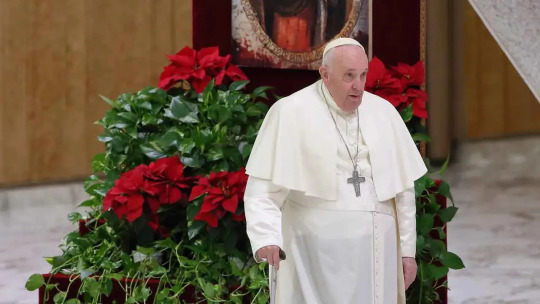
Pope Francis hosted a group of transgender women — many of whom are sex workers or migrants from Latin America — to a Vatican luncheon for the Catholic Church's "World Day of the Poor" last week.
The pontiff and the transgender women have formed a close relationship since the pope came to their aid during the COVID-19 pandemic, when they were unable to work. Now, they meet monthly for VIP visits with the pope and receive medicine, money and shampoo any day, according to The Associated Press.
2. New York just installed its first offshore wind turbine

The first wind turbine installation at South Fork Wind, New York State’s first offshore wind farm, is complete.
The 130-megawatt (MW) South Fork Wind will be the US’s first completed utility-scale wind farm in federal waters.
3. Anonymous businessman donates $800k to struggling food bank
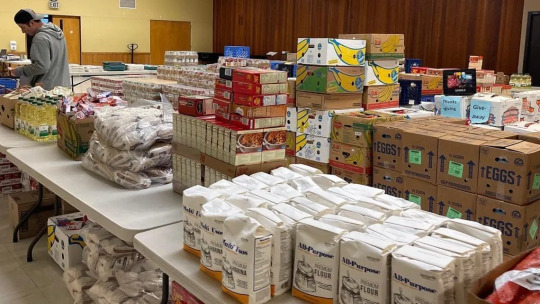
But this Thanksgiving, a longtime prayer of food bank leaders was finally answered: an anonymous benefactor donated the full $800,000 they needed to move out of a facility they've long outgrown. That benefactor, however, preferred to stay anonymous.
"Very private company, really don't want attention," said Debbie Christian, executive director of the Auburn Food Bank. "It's a goodhearted person that just wants to see the work here continue, wants to see it expand."
4. Empowering woman saving hopes and mental health of suffering Ukrainian kids

Kenza Hadij-Brahim is at the forefront of promoting Circle of Toys
Hadj-Brahim is helping to launch the Circle of Toys initiative. A project that provides Ukrainian children in need of some normality with preloved toys. This new initiative connects people with old toys they might otherwise throw away, with Ukrainian families in need who want to provide some comfort to their children in this distressing time.
Find Refuge said : “The endeavour is driven by a sincere purpose: spark joy, foster play, and bring a hint of normalcy back to the young lives in Ukraine.”
5. TWO LOST CITIES HIDDEN FOR CENTURIES WERE JUST DISCOVERED IN BOLIVIA
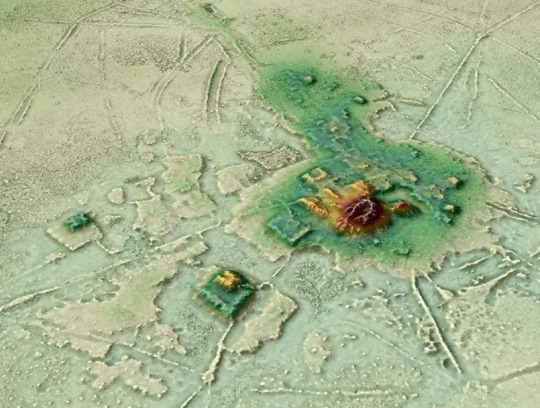
Researchers have found these areas not only housed structures and pyramids but it has been uncovered that there were advanced irrigation systems, earthworks, large towns, causeways, and canals that cover miles.
Dr. Heiko Prümers from the German Archaeological Institute, who was also involved in the study comments that “this indicated a relatively dense settlement in pre-Hispanic times. Our goal was to conduct basic research and trace the settlements and life there. The research sheds light on the sheer magnitude and magnificence of the civic-ceremonial centers found buried in the forest”.
6. Sheep dubbed Fiona rescued from cliff in Scotland where she was stuck for more than 2 years
youtube
And at last, some positive climate news:
7. Three positive climate developments
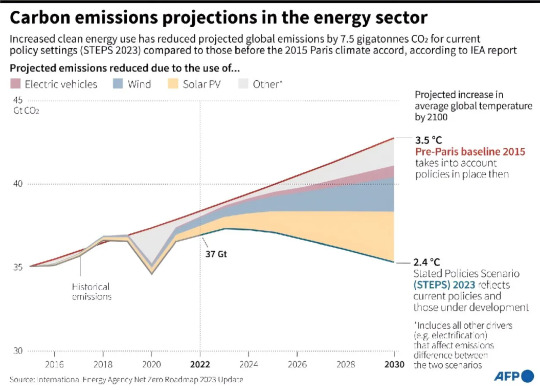
Heating
When the Paris Agreement was adopted, the global reliance on fossil fuels placed the world on a path towards a 3.5C rise in temperature by 2100. Eight years on, country commitments to reduce their carbon footprints have pulled that down slightly, putting the world on a path for a 2.5C to 2.9C by the end of the century.
Peak emissions
Annual greenhouse gas emissions responsible for climate change have risen roughly nine percent since COP21, according to UN data. But the rate of the increase has slowed significantly. Recent estimates by the Climate Analytics institute find global emissions could peak by 2024
Rising renewables
Three technologies—solar, wind and electric vehicles—are largely behind the improved global warming estimates since 2015.
---
That's it for this week :)
This newsletter will always be free. If you liked this post you can support me with a small kofi donation here:
Buy me a coffee ❤️
Also don’t forget to reblog this post with your friends.
812 notes
·
View notes
Text

So, I've had people asking, why does it matter if rockets are fired towards Tel Aviv and other settlements when they cause a fraction of the damage done by an Israeli missile?
Psychological warfare - the rocket barrages eliminate any sense of security that Israelis might have during the war. It reminds them that there's a price for the occupation of Palestine. I can't tell you how many videos I've seen of people in luxury resorts and other high class lodgings shouting and fleeing in fear at a rocket from Gaza or Yemen. It makes it hard for them to go about their daily life ignoring what is happening. Furthermore it undermines the strength of the IDF. Netanyahu can go on TV and claim to have complete control over Gaza but a rocket barrage undoes that easily. A rocket barrage tells Israelis and the rest of the world that not only is Hamas (and the other groups) still intact, it has enough of a stockpile to still bomb parts of Israel over 50 days into the conflict. Israeli media is constantly shocked every time this happens because there's always the assumption that Palestinians are unprepared in every way for the conflict we're seeing today. It forces them to take the threat posed by the Resistance very seriously which of course leads to the existential meltdowns you see on Israeli social media accounts.
De-settlement - There are hundreds of thousands of internally displaced settlers right now. Most of them are unwilling to return because the settlements are still getting hit and it's obvious the IDF is struggling to get things under control. The annexation of Palestinian land and the formation of settlements has led to a great deal of violence towards Palestinians in both Gaza and the West Bank. Hence, why forcing settlers to evacuate is seen as a great success by the Resistance and their supporters. Hezbollah, for example, has mentioned that several times while doing debriefs of their efforts in the conflict
Hits to the economy - if the settlers are evacuated, who will run local businesses? Not to mention underpaid and overworked foreign migrant workers have fled the country while exploited Gazan workers are trapped in Gaza. Israel is trying to combat this by making deals with countries like India and Mali to get tens of thousands of workers but it's not going to be enough especially the longer this conflict goes on. There's also the fact that tourism won't recover to pre war levels due to security concerns. The same thing with foreign capital leaving the country. Israel is too unstable and evidently incapable of regaining that stability (by quickly defeating the Palestinian resistance) which makes it risky to invest in Israeli businesses.
Logistical nightmare - Gazan rockets are cheap to produce, Israeli interceptor missiles are not. Israel is spending more to stop the barrages of rockets than the Resistance has spent probably in the past 5 years. It's the same issue on the Northern border to Lebanon and whenever Yemen sends its long range missiles. It's not like both Israel, America and Europe have endless supplies of weapons and ammunition, they sent most of their stockpiles to Ukraine. The longer this goes on, the more dire things will get but we're already seeing the strain

#yemen#jerusalem#tel aviv#current events#palestine#free palestine#gaza#free gaza#news on gaza#palestine news#war on gaza#war news
985 notes
·
View notes
Note
Why is class the primary contradiction and not anti black racism
Saying that class is the primary contradiction is another way of saying that capitalism is the primary source of exploitation and inequality. To understand why marxists (mostly) believe this is the case instead of other forms of oppression such as racism or patriarchy, you gotta know what the infrastructure and the superstructure is.
The infrastructure is the system of productive relations that exists at the base of society, which we would call capitalism. It is the system of salaried work, the private ownership of the means of production, the extraction of value from the work the proletariat does, etc. It is the set of systems and institutions from which the rest of society stems
The superstructure is everything else. This includes the state, the media, education, a parliamentary system if it exists, the police and military, the institutions of imperialism, patriarchy, etc.
The infrastructure serves to support the superstructure, while the superstructure serves to both protect and justify the infrastructure. this is why bourgeois media is always serving some kind of capitalist interest, why the state is understood to marxists as an instrument of oppression over one class over the other, and why liberal democratic institutions are not a viable way to change the infrastructure, the ultimate goal of communists.
It would follow then that other forms of oppression, such as anti-black racism, while just as insidious, ultimately serve to protect capitalism by introducing a wedge between white and black workers, between working women and men, between queer and cisstraight workers, etc.
This is verifiable when looking at the way parts of the superstructure, especially bourgeois media, treat racism and compare it with how they treat capitalism. The US may be different and racism is more prevalent in all political spheres, but capitalism is a system in place throughout most of the world. In most imperial core countries which benefit inmensly from migrant workers that escape from the instability created by the very same imperial core countries, bourgeois media tends to have two opinions: we should deport or kill every single migrant who comes here, or we should welcome them and insert them into broader society (with some caveats). This is the media representing two broad factions within the country's bourgeoisie, the one which would benefit more from nationalistic hatred of non-white people, and the one which would benefit from the cheaper average salaries and bigger workforce that integrating migrants would make.
However, what you will never see is a bourgeois media outlet genuinely opposing an end to the current economic system, to the system that continues to sponsor imperialist wars worldwide. Absolutely no one questions the dominant ideology of liberalism, the ideology of capitalism.
Aside from this, there is also capitalism in majority black countries. They have black bourgeoisies which extract value from labor, with black workers whose struggles with their bourgeoisies are very similar to yours. They may still also suffer from the system of imperialism that extracts value from entire continents, of course, and in some cases the black bourgeoisie aligns itself with imperialist capitalists, if they think that appealing to nationalist sentiment against colonizers isn't as profitable.
Going back to the question for a moment, class is the primary contradiction because it is capitalism's own contradictions that will eventually also cause its collapse. Anti-black racism can be done away with to preserve capitalism, but class division is the main trait and contradiction of capitalism. It will be the only contradiction that capitalists will never ever surrender because it's the main pillar that supports their supremacy over black and white workers.
Does this mean that communists think racism (or whichever other system of division of the working class, such as patriarchy) is irrelevant because it is not the primary contradiction? no. What this does mean is that, while still addressing racist, patriarchal, homophobic, transphobic systems, we shouldn't put to the side the central struggle between workers and capitalists. A black worker and a white worker have more in common with each other than with the black capitalist that exploits them both, and further benefits if the white worker believes themself to be superior to their black coworker.
We’re going to fight racism not with racism, but we’re going to fight with solidarity. We say we’re not going to fight capitalism with black capitalism, but we’re going to fight it with socialism
Fred Hampton
343 notes
·
View notes
Text
Links for donations to Sudan
UNHCR ACNUR: People are being forced to flee amid fighting and refugees are arriving in neighboring Chad in desperate need of help.
UNHCR, the UN Refugee Agency, is on the ground assisting newly arrived refugees and providing life-saving support.
CICV: Health care could collapse at any time, despite the best efforts of Sudanese health teams, who continue to work in extremely difficult conditions, caring for injured people and providing other essential services to the population.
There are severe shortages of water, energy, food and essential medical supplies.
Sudan Relief Fund: CRISIS APPEAL: Nearly 7.1 million people displaced in Sudan. Destruction of healthcare facilities, disruption of critical healthcare services like immunizations, newborn care and availability of healthcare workers is putting many at risk of death and life-threatening complications. We need every bit of help in generating a relief fund to continue our efforts in Sudan.
Sudanese family of 8 struggling to escape the War.
Emergency response in Sudan: UNICEF continues to call for an immediate ceasefire across Sudan, and reiterates its call for all parties to the conflict to respect international humanitarian and human rights law – including ensuring that children are protected – and that rapid, safe, unimpeded humanitarian access to children and families in affected areas is facilitated. Without such access, critical lifesaving humanitarian support will be out of reach for millions of vulnerable children.
Despite the challenges, UNICEF and partners have provided life-saving assistance to more than 6 million children inside Sudan and in neighbouring countries, including water, health, nutrition, safe spaces and learning.
Sudan: A deepening humanitarian crisis: Sudan has plunged into a conflict of alarming scale, leaving half of the population in need of urgent assistance to survive.
This comes on top of existing challenges including economic hardship, disease outbreaks and climate-related hazards.
Families are struggling to access water, food, fuel, and other critical commodities and they need urgent help.
Be a lifeline to Migrants in need: With almost 25 million people - half the population - in need of some form of aid, the situation is particularly dire for the more than 7 million people displaced within Sudan.
Periods Don’t Stop for War! Stand with Sudanese Women and Girls: They Need Your Help Now!: SIHA Network will partner with the PNDS (Fawta Tsed Alkhana – Pad Needed, Dignity Seeded) Initiative and Sustainable Development Response Organization (SUDRO) on a campaign to collective donations and use them to buy and distribute the crucial menstrual dignity kit items Sudanese women and girls desperately need right now.
Through providing menstrual products, the risk on women and girls’ health can be decreased and their well-being can be improved.
You can also donate to MSF International here and for MSF Sudan here.
165 notes
·
View notes
Text
I basically only post and read posts in my bubble aside from occasionally scrolling through Real Tumblr, but people’s takes about US politics on this website are fucking unbelievable. They talk about our government as if it didn’t save us from a pandemic-induced financial collapse, pump trillions of dollars into public works, not to mention substantially invest and rein in pharmaceuticals, and is instead some sort of ultra-neoliberal-corporate kitty shooting machine.
Like let’s be for real. Do they…know what the government does? How it works? Do you know what a conservative is? Do you know what an authoritarian is?
Because a system of government whose citizens are all lucky it has had continuous peaceful transfer of power for centuries could very well have its greatest norm violated—that those who reject its legitimacy must be rejected—and we don’t blink an eye.
Because the first major investment against climate change, coupled with life saving investments into healthcare, cancer research, and drug costs could be shredded by indiscriminate fiscal conservatives who don’t care if we die in forest fires, cancer from pollution, lose insurance because we’re jobless, or, apparently, all die in a fricking plague.
Because a foreign policy establishment that had finally reversed two decades of foreign intervention in favor of a normalization strategy aimed at reducing American foot presence, drone strikes, and indiscriminate killings is about to be replaced by the whims of a man who dropped the “mother of all bombs” on the Middle East, gave American soldiers up to Russian bounty hunters, extorted a foreign leader for political favors and arguably indirectedly resulted in that country being BRUTALLY INVADED BY AN IMPERIAL NEIGHBOR, is in the pockets of CCP-funded billionaires, and WANTS TO “FINISH THE JOB” IN GAZA.
Because a President who is against family separations and promotes a path for DREAMERs and more legal immigration and rights for unodcumented people could be replaced by a man who wants to separate families, PUT UNDOCUMENTED PEOPLE IN CONCENTRATION CAMPS, RESTRICT EVEN LEGAL IMMIGRATION, ESPECIALLY THAT OF MUSLIMS, AND SHOOT MIGRANTS.
Because a President who stopped a repeat of the Great Recession and the painful decade that followed it with strong fiscal stimulus which CUT CHILD POVERTY IN HALF BEFORE CONSERVATIVES MADE IT EXPIRE, then managed to cut deficits and presided over a decline in inflation, resulting in record high real wages (aka taking into account inflation) for workers is going to be replaced by a President who wants to TARIFF ALL FOREIGN GOODS by 15%, CUT TAXES FOR THE FILTHY RICH AND THE TAX ENFORCEMENT TO STOP THEM, INCREASE CHILD POVERTY AND UNINSUREDNESS by cutting gov’t programs, and HURT UNIONS which by every measure will lead to lower wages, higher prices, and more poverty and starvation.
Because a President who has pledged to sign a bill codifying Roe v. Wade (which has yet to be possible in recent memory, whatever these kids say), who enshrined the right to marry someone of the same sex or different race, who supports the Equality Act which would enshrine LGBTQ protections into the law, could be replaced by THE MAN WHO REMOVED AMERICA’S RIGHT TO ABORTION, whose Christian nationalist supporters want to END SEXUAL FREEDOM as we know it including TARGETING IVF AND BIRTH CONTROL, who wants to reverse LGBTQ discrimination law in favor of Christian bigots who hate queer and trans people, and who demonizes that community to win political support.
Ask yourself if you really think there’s no difference between the two. Ask yourself if a reasonable person given these facts would choose the latter. Ask yourself why you see so much propagandizing against the reasonable choice. Ask yourself why so many people seem to have opinions on this when they “don’t even go here”.
Maybe I’m just preaching to the choir here. Maybe people who say this inane stuff wouldn’t vote anyways. Maybe somehow we’re screwed anyways. Maybe people will stupidly vote third party and we’re fucked. Maybe this will get me attacked.
I don’t care anymore. If I have to see one more fucking post acting like we live under the fucking Evil Empire while a SELF PROCLAIMED DICTATOR is about to end the best streak of decent governance I’ve ever seen in a while, I just can’t anymore.
#us politics#abortion rights#abortion#biden#trump#joe biden#election 2024#climate change#climate crisis#gaza#palestine#israel#middle east#christian nationalism#lgbtq#trans rights#poverty#economy#economics#politics#healthcare#human rights#immigration#misinformation#disinformation#donald trump#american
112 notes
·
View notes
Photo
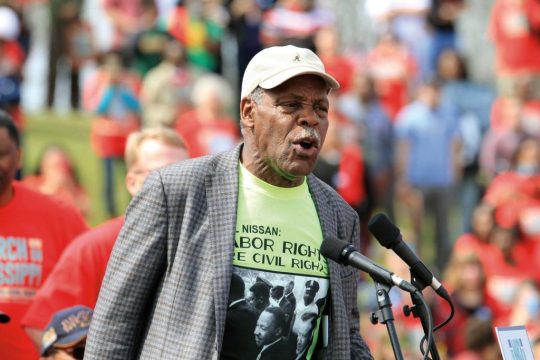
On this day, 22 July 1946, actor and activist Danny Glover was born. The son of two postal workers who were also activists in the National Association for the Advancement of Coloured People, Glover took part in the longest student strike in US history in 1968. As a student at San Francisco State University, Glover took part in the successful strike of the Black Students Union and Third World Liberation Front demanding the creation of a School of Ethnic Studies. He worked in the Black Panthers free breakfast for children programme and helped them organise their newspaper. He later lived in a commune for a year, fought against the Vietnam war and colonialism in Africa and more recently has supported migrant workers, the occupy movement and Black Lives Matter. In 2004, in an interview with AARP magazine, he explained how he remains optimistic: 'I try to find hope in struggle and resistance in small places as much as I can. The progressive movement against the war of occupation in Iraq is a reason for hope, as is resistance to free trade agreements in Latin America. Those are moments that we have to celebrate: that people still find the resolve and energy to resist.' You can learn more about the Black Panthers in these books by former members: https://shop.workingclasshistory.com/collections/books/black-panthers Pictured: Glover supporting Nissan workers' organising in Mississippi https://www.facebook.com/photo.php?fbid=666208148885737&set=a.602588028581083&type=3
236 notes
·
View notes
Note
OK, I'll bite - what's the deal with the United Farm Workers? What were their strengths and weaknesses compared to other labor unions?
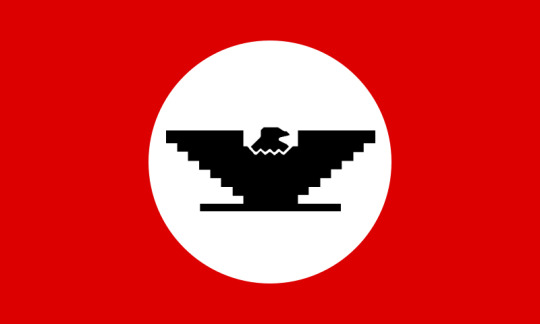
It is not an easy thing to talk about the UFW, in part because it wasn't just a union. At the height of its influence in the 1960s and 1970s, it was also a civil rights movement that was directly inspired by the SCLC campaigns of Martin Luther King and owed its success as much to mass marches, hunger strikes, media attention, and the mass mobilization of the public in support of boycotts that stretched across the United States and as far as Europe as it did to traditional strikes and picket lines.
It was also a social movement that blended powerful strains of Catholic faith traditions with Chicano/Latino nationalism inspired by the black power movement, that reshaped the identity of millions away from asimilation into white society and towards a fierce identification with indigeneity, and challenged the racist social hierarchy of rural California.
It was also a political movement that transformed Latino voting behavior, established political coalitions with the Kennedys, Jerry Brown, and the state legislature, that pushed through legislation and ran statewide initiative campaigns, and that would eventually launch the careers of generations of Latino politicians who would rise to the very top of California politics.
However, it was also a movement that ultimately failed in its mission to remake the brutal lives of California farmworkers, which currently has only 7,000 members when it once had more than 80,000, and which today often merely trades on the memory of its celebrated founders Dolores Huerta and Cesar Chavez rather than doing any organizing work.
To explain the strengths and weaknesses of the UFW, we have to start with some organizational history, because the UFW was the result of the merger of several organizations each with their own strengths and weaknesses.
The Origins of the UFW:
To explain the strengths and weaknesses of the UFW, we have to start with some organizational history, because the UFW was the result of the merger of several organizations each with their own strengths and weaknesses.
In the 1950s, both Dolores Huerta and Cesar Chavez were community organizers working for a group called the Community Service Organization (an affiliate of Saul Alinsky's Industrial Areas Foundation) that sought to aid farmworkers living in poverty. Huerta and Chavez were trained in a novel strategy of grassroots, door-to-door organizing aimed not at getting workers to sign union cards, but to agree to host a house meeting where co-workers could gather privately to discuss their problems at work free from the surveillance of their bosses. This would prove to be very useful in organizing the fields, because unlike the traditional union model where organizers relied on the NRLB's rulings to directly access the factory floors, Central California farms were remote places where white farm owners and their white overseers would fire shotguns at brown "trespassers" (union-friendly workers, organizers, picketers).
In 1962, Chavez and Huerta quit CSO to found the National Farm Workers Association, which was really more of a worker center offering support services (chiefly, health care) to independent groups of largely Mexican farmworkers. In 1965, they received a request to provide support to workers dealing with a strike against grape growers in Delano, California.
In Delano, Chavez and Huerta met Larry Itliong of the Agricultural Workers Organizing Committee (AWOC), which was a more traditional labor union of migrant Filipino farmworkers who had begun the strike over sub-minimum wages. Itliong wanted Chavez and Huerta to organize Mexican farmworkers who had been brought in as potential strikebreakers and get them to honor the picket line.
The result of their collaboration was the formation of the United Farm Workers as a union of the AFL-CIO. The UFW would very much be marked by a combination of (and sometimes conflict between) AWOC's traditional union tactics - strikes, pickets, card drives, employer-based campaigns, and collective bargaining for union contracts - and NFWA's social movement strategy of marches, boycotts, hunger strikes, media campaigns, mobilization of liberal politicians, and legislative campaigns.
1965 to 1970: the Rise of the UFW:
While the strike starts with 2,000 Filipino workers and 1,200 Mexican families targeting Delano area growers, it quickly expanded to target more growers and bring more workers to the picket lines, eventually culminating in 10,000 workers striking against the whole of the table grape growers of California across the length and breadth of California.
Throughout 1966, the UFW faced extensive violence from the growers, from shotguns used as "warning shots" to hand-to-hand violence, to driving cars into pickets, to turning pesticide-spraying machines onto picketers. Local police responded to the violence by effectively siding with the growers, and would arrest UFW picketers for the crime of calling the police.
Chavez strongly emphasized a non-violent response to the growers' tactics - to the point of engaging in a Gandhian hunger strike against his own strikers in 1968 to quell discussions about retaliatory violence - but also began to employ a series of civil rights tactics that sought to break what had effectively become a stalemate on the picket line by side-stepping the picket lines altogether and attacking the growers on new fronts.
First, he sought the assistance of outside groups and individuals who would be sympathetic to the plight of the farmworker and could help bring media attention to the strike - UAW President Walter Reuther and Senator Robert Kennedy both visited Delano to express their solidarity, with Kennedy in particular holding hearings that shined a light on the issue of violence and police violations of the civil rights of UFW picketers.
Second, Chavez hit on the tactic of using boycotts as a way of exerting economic pressure on particular growers and leveraging the solidarity of other unions and consumers - the boycotts began when Chavez enlisted Dolores Huerta to follow a shipment of grapes from Schenley Industries (the first grower to be boycotted) to the Port of Oakland. There, Huerta reached out to the International Longshoremen's and Warehousemen's Union and persuaded them to honor the boycott and refuse to handle non-union grapes. Schenley's grapes started to rot on the docks, cutting them off from the market, and between the effects of union solidarity and growing consumer participation in the UFW's boycotts, the growers started to come under real economic pressure as their revenue dropped despite a record harvest.
Throughout the rest of the Delano grape strike, Dolores Huerta would be the main organizer of the national and internal boycotts, travelling across the country (and eventually all the way to the UK) to mobilize unions and faith groups to form boycott committees and boycott houses in major cities that in turn could educate and mobilize ordinary consumers through a campaign of leafleting and picketing at grocery stores.
Third, the UFW organized the first of its marches, a 300-mile trek from Delano to the state capital of Sacramento aimed at drawing national attention to the grape strike and attempting to enlist the state government to pass labor legislation that would give farmworkers the right to organize. Carefully organized by Cesar Chavez to draw on Mexican faith traditions, the march would be labelled a "pilgrimage," and would be timed to begin during Lent and culminate during Easter. In addition to American flags and the UFW banner, the march would be led by "pilgrims" carrying a banner of Our Lady of Guadelupe.
While this strategy was ultimately effective in its goal of influencing the broader Latino community in California to see the UFW as not just a union but a vehicle for the broader aspirations of the whole Latino community for equality and social justice, what became known in Chicano circles as La Causa, the emphasis on Mexican symbolism and Chicano identity contributed to a growing tension with the Filipino half of the UFW, who felt that they were being sidelined in a strike they had started.
Nevertheless, by the time that the UFW's pilgrimage arrived at Sacramento, news broke that they had won their first breakthrough in the strike as Schenley Industries (which had been suffering through a four-month national boycott of its products) agreed to sign the first UFW union contract, delivering a much-needed victory.
As the strike dragged on, growers were not passively standing by - in addition to doubling down on the violence by hiring strikebreakers to assault pro-UFW farmworkers, growers turned to the Teamsters Union as a way of pre-empting the UFW, either by pre-emptively signing contracts with the Teamsters or effectively backing the Teamsters in union elections.
Part of the darker legacy of the Teamsters is that, going all the back to the 1930s, they have a nasty habit of raiding other unions, and especially during their mobbed-up days would work with the bosses to sign sweetheart deals that allowed the Teamsters to siphon dues money from workers (who had not consented to be represented by the Teamsters, remember) while providing nothing in the way of wage increases or improved working conditions, usually in exchange for bribes and/or protection money from the employers. Moreover, the Teamsters had no compunction about using violence to intimidate rank-and-file workers and rival unions in order to defend their "paper locals" or win a union election. This would become even more of an issue later on, but it started up as early as 1966.
Moreover, the growers attempted to adapt to the UFW's boycott tactics by sharing labels, such that a boycotted company would sell their products under the guise of being from a different, non-boycotted company. This forced the UFW to change its boycott tactics in turn, so that instead of targeting individual growers for boycott, they now asked unions and consumers alike to boycott all table grapes from the state of California.
By 1970, however, the growing strength of the national grape boycott forced no fewer than 26 Delano grape growers to the bargaining table to sign the UFW's contracts. Practically overnight, the UFW grew from a membership of 10,000 strikers (none of whom had contracts, remember) to nearly 70,000 union members covered by collective bargaining agreements.
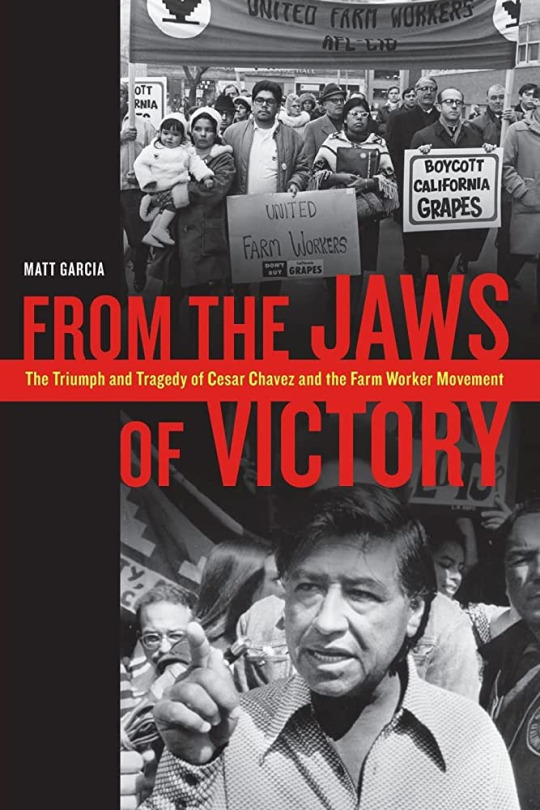
1970 to 1978: The UFW Confronts Internal and External Crises
Up until now, I've been telling the kind of simple narrative of gradual but inevitable social progress that U.S history textbooks like, the Hollywood story of an oppressed minority that wins a David and Goliath struggle against a violent, racist oligarchy through the kind of non-violent methods that make white allies feel comfortable and uplifted. (It's not an accident that the bulk of the 2014 film Cesar Chavez starring Michael Peña covers the Delano Grape Strike.)
It's also the period in which the UFW's strengths as an organization that came out of the community organizing/civil rights movement were most on display. In the eight years that followed, however, the union would start to experience a series of crises that would demonstrate some of the weaknesses of that same institutional legacy. As Matt Garcia describes in From the Jaws of Victory, in the wake of his historic victory in 1970, Cesar Chavez began to inflict a series of self-inflicted injuries on the UFW that crippled the functioning of the union, divided leadership and rank-and-file alike, and ultimately distracted from the union's external crises at a time when the UFW could not afford to be distracted.
That's not to say that this period was one of unbroken decline - as we'll discuss, the UFW would win many victories in this period - but the union's forward momentum was halted and it would spend much of the 1970s trying to get back to where it was at the very start of the decade.
To begin with, we should discuss the internal contradictions of the UFW: one of the major features of the UFW's new contracts was that they replaced the shape-up with the hiring hall. This gave the union an enormous amount of power in terms of hiring, firing and management of employees, but the quid-pro-quo of this system is that it puts a significant administrative burden on the union. Not only do you have to have to set up policies that fairly decide who gets work and when, but you then have to even-handedly enforce those policies on a day-to-day basis in often fraught circumstances - and all of this is skilled white-collar labor.
This ran into a major bone of contention within the movement. When the locus of the grape strike had shifted from the fields to the urban boycotts, this had made a new constituency within the union - white college-educated hippies who could do statistical research, operate boycott houses, and handle media campaigns. These hippies had done yeoman's work for the union and wanted to keep on doing that work, but they also needed to earn enough money to pay the rent and look after their growing families, and in general shift from being temporary volunteers to being professional union staffers.
This ran head-long into a buzzsaw of racial and cultural tension. Similar to the conflicts over the role of white volunteers in CORE/SNCC during the Civil Rights Movement, there were a lot of UFW leaders and members who had come out of the grassroots efforts in the field who felt that the white college kids were making a play for control over the UFW. This was especially driven by Cesar Chavez' religiously-inflected ideas of Catholic sacrifice and self-denial, embodied politically as the idea that a salary of $5 a week (roughly $30 a week in today's money) was a sign of the purity of one's "missionary work." This worked itself out in a series of internicene purges whereby vital college-educated staff were fired for various crimes of ideological disunity.
This all would have been survivable if Chavez had shown any interest in actually making the union and its hiring halls work. However, almost from the moment of victory in 1970, Chavez showed almost no interest in running the union as a union - instead, he thought that the most important thing was relocating the UFW's headquarters to a commune in La Paz, or creating the Poor People's Union as a way to organize poor whites in the San Joaquin Valley, or leaving the union altogether to become a Catholic priest, or joining up with the Synanon cult to run criticism sessions in La Paz. In the mean-time, a lot of the UFW's victories were withering on the vine as workers in the fields got fed up with hiring halls that couldn't do their basic job of making sure they got sufficient work at the right wages.

Externally, all of this was happening during the second major round of labor conflicts out in the fields. As before, the UFW faced serious conflicts with the Teamsters, first in the so-called "Salad Bowl Strike" that lasted from 1970-1971 and was at the time the largest and most violent agricultural strike in U.S history - only then to be eclipsed in 1973 with the second grape strike. Just as with the Salinas strike, the grape growers in 1973 shifted to a strategy of signing sweetheart deals with the Teamsters - and using Teamster muscle to fight off the UFW's new grape strike and boycott. UFW pickets were shot at and killed in drive-byes by Teamster trucks, who then escalated into firebombing pickets and UFW buildings alike.
After a year of violence, reduced support from the rank-and-file, and declining resources, Chavez and the UFW felt that their backs were up against a wall - and had to adjust their tactics accordingly. With the election of Jerry Brown as governor in 1974, the UFW pivoted to a strategy of pressuring the state government to enact a California Agricultural Labor Relations Act that would give agricultural workers the right to organize, and with that all the labor protections normally enjoyed by industrial workers under the Federal National Labor Relations Act - at the cost of giving up the freedom to boycott and conduct secondary strikes which they had had as outsiders to the system.

This led to the semi-miraculous Modesto March, itself a repeat of the Delano-to-Sacramento march from the 1960s. Starting as just a couple hundred marchers in San Francisco, the March swelled to as many as 15,000-strong by the time that it reached its objective at Modesto. This caused a sudden sea-change in the grape strike, bringing the growers and the Teamsters back to the table, and getting Jerry Brown and the state legislature to back passage of California Agricultural Labor Relations Act.
This proved to be the high-water mark for the UFW, which swelled to a peak of 80,000 members. The problem was that the old problems within the UFW did not go away - victory in 1975 didn't stop Chavez and his Chicano constituency feuding with more distinctively Mexican groups within the movement over undocumented immigration, nor feuding with Filipino constituencies over a meeting with Ferdinand Marcos, and nor escalating these internal conflicts into a series of leadership purges.
Conclusion: Decline and Fall
At the same time, the new alliance with the Agricultural Labor Relations Board proved to be a difficult one for the UFW. While establishment of the agency proved to be a major boon for the UFW, which won most of the free elections under CALRA (all the while continuing to neglect the critical hiring hall issue), the state legislature badly underfunded ALRB, forcing the agency to temporarily shut down. The UFW responded by sponsoring Prop 14 in the 1976 elections to try to empower ALRB, and then got very badly beaten in that election cycle - and then, when Republican George Deukmejian was elected in 1983, the ALRB was largely defunded and unable to achieve its original elective goals.
In the wake of Deukmejian, the UFW went into terminal decline. Most of its best organizers had left or been purged in internal struggles, their contracts failed to succeed over the long run due to the hiring hall problem, and the union basically stopped organizing new members after 1986.
#history#u.s history#labor history#ufw#united farm workers#cesar chavez#dolores huerta#trade unions#social history#social movements#unions
56 notes
·
View notes
Text
Dozens of migrants and their supporters gathered in Montreal on Saturday to demand full regularization for all, and for political leaders to stop blaming asylum seekers for systemic problems.
“People have waited long enough and we really need a broad, comprehensive regularization program now without exceptions,” said Mostafa Henaway of the Immigrant Workers Centre.
Many on hand came to Canada as refugees. They fled difficult, sometimes deadly situations in their home countries to seek a better life.
Harjinder Singh said he arrived from India in 2019, after fleeing violence related to the Khalistan movement. He said he works at Dollarama, asks for no help from the government, but has not been able to get permanent residency. [...]
Without official status, they’re excluded from many public services.
“We’re happy to employ them in our day cares, but we don’t want them accessing our daycares,” decried Henaway.
Continue Reading.
Tagging: @politicsofcanada
#cdnpoli#immigration refugee and citizenship canada#Montreal#Québec#workers' rights#racism#xenophobia
72 notes
·
View notes
Text

Did you know that tree planters are mostly migrant workers. Did you know that saw mills are mostly run by migrant workers. If you want toilet paper, you better support migrant workers. Americans don't want the jobs.
201 notes
·
View notes